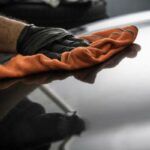Blind spots are areas where vehicles have little visibility. Find out where they are, how to reduce them and what’s available on the innovative market to help you drive more safely
The term “blind spot” is used in various areas of life. In medicine, in music lyrics, in history… in all of them the term is related to a lack of vision in some field. In traffic, the expression is also well known and is used to define an area where the vehicle is not visible. In other words, a car’s blind spot is the point at which the rear-view mirror is unable to reflect images outside the vehicle.
Experts say that all cars have blind spots and the risk of accidents varies according to the number and size of these spots. They are more common on the sides, which prevents drivers from seeing motorcyclists riding between the lanes, too close to the vehicles. The size of a vehicle’s lateral blind spot depends exclusively on the size of the rear-view mirror. At the front of the vehicle, the blind spot is influenced by the width of the pillar. This factor also influences the visibility of the rear of the vehicle.
It’s impossible to eliminate blind spots in vehicles, but it is possible to reduce them by adjusting the seat, the height of the seat belt and the rear-view mirrors correctly. The inner rear-view mirror should reflect as much of the rear window area as possible, while the outer rear-view mirror should reflect as much of the outside of the vehicle as possible.
To Reduce the Blind Spot
Bliss is a device designed to monitor and reduce blind spots in vehicles, thus preventing accidents. The system works in a very simple way, alerting the driver with a warning light next to the rearview mirror when there is a vehicle approaching or approaching the blind spot of the rearview mirror.
BLIS is nothing more than a set of digital cameras that detect the approach of vehicles, informing you of the movement of vehicles that are speeding 20 km/h below or 70 km/h above your car.
In Brazil, the equipment is not yet available on all vehicles, but it can already be seen on models such as the Volvo C30, the Audi Q7 and the new Audi A3.
Another novelty on the market is a mirror capable of tripling the driver’s field of vision. Invented by Drexel University in the United States, the mirror has a greater 45-degree angle (current rear-view mirrors have a 15-degree angle), which increases the space reflected in the mirror. The reflected images have very few distortions, so it would be quite feasible to use this type of mirror in cars, but there is still no forecast for this type of rear-view mirror to be used by car manufacturers.
The Cars with the Most Blind Spots on the Market
With a view to reducing the number of accidents due to blind spots, the Center for Experimentation and Road Safety (Cesvi) carried out a study that classifies vehicles according to the visibility provided to the driver: the Visibility Index
The test assessed the front, side and rear visibility of vehicles with different bodies and gave scores from 0.5 to 5 for each of these aspects. The bad news is that no car achieved the maximum score (5) and only 13 of the almost 200 models tested achieved the highest score, 4.5. Most of the media outlets analyzed received average scores and 19 received below average scores.
The compact hatchbacks with the fewest blind spots are the Ford Ka (2008 to 2010 models) and the MINI Cooper (2009 to 2010 models). The worst scores went to the J3 (2010 to 2011), the VW Fox (2003 to 2010), the GM Corsa (2002 to 2010) and the Ford Fiesta (2007 to 2010). In the compact sedan category, Fiat’s Siena Fire (2004 to 2010) had the biggest blind spot. With a better score, it was followed by the Ford Fusion (2006 to 2008).
Although most of the vehicles received poor scores, there are cars that don’t have blind spots at the front (it’s impossible for a vehicle not to have blind spots at the rear or side). Models such as the Honda New Fit, Nissan Tiida Sedan and Audi A6 do not have blind spots at the front. With the exception of the Tiida, which scored 3 overall, the other two models scored 4.5. Cars such as the Hyundai i30 CW, the Chevrolet Captiva, the J6 from JAC and the Peugeot 408 only had full visibility on the right side, but they still scored well.



